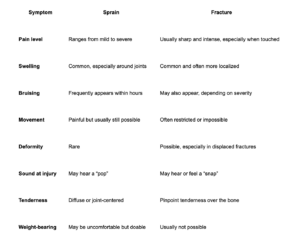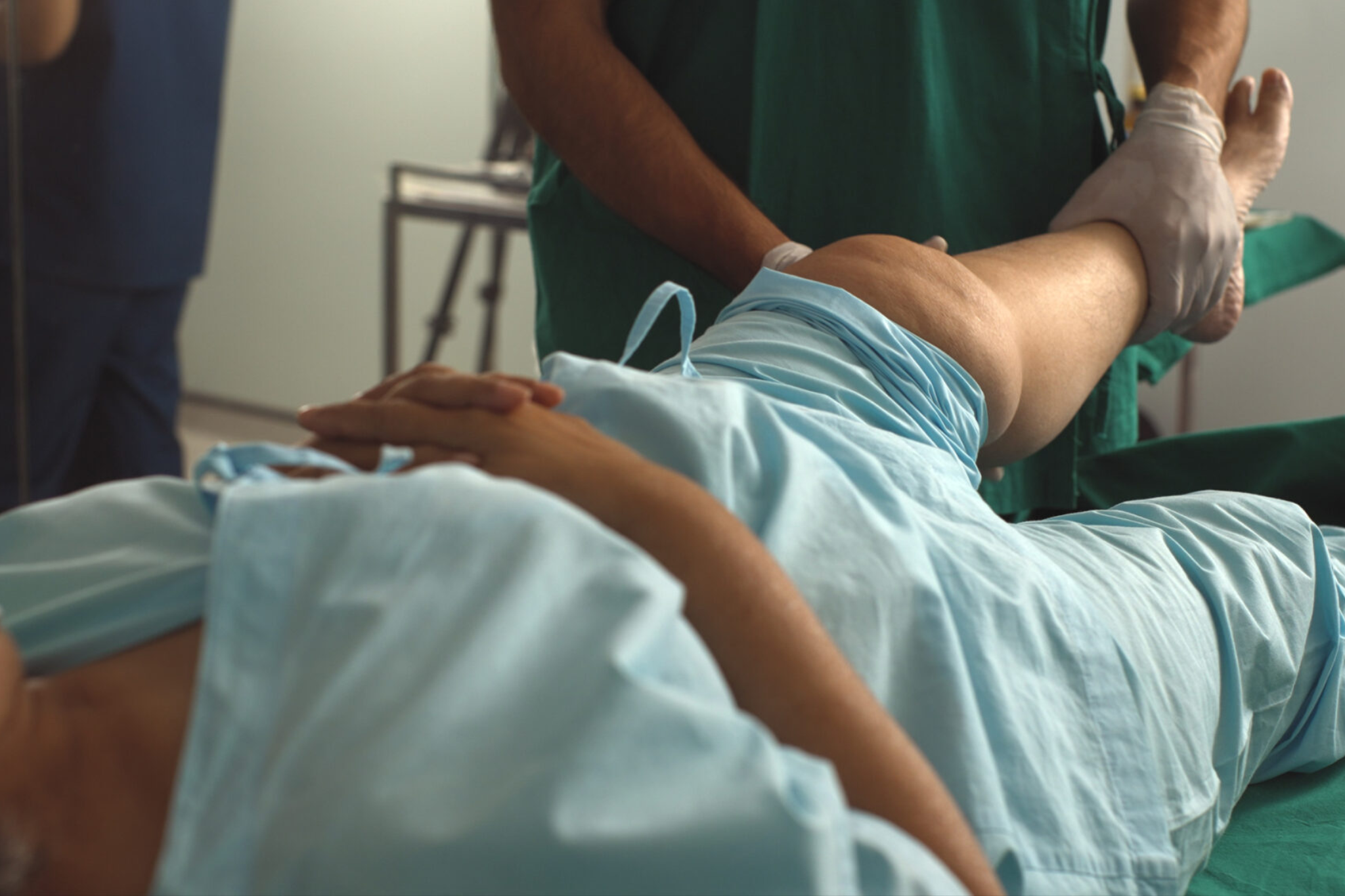
Is It a Sprain or Fracture? Don’t Wait to Find Out
You didn’t plan for this. One minute you’re stepping off the curb, landing a jump, or chasing after your dog. And the next, you’re on the ground, clutching a throbbing ankle or wrist.
It hurts. It’s swelling. And you’re left wondering: did I just sprain it or is it broken?
When you’re in pain and unsure what to do next, the last thing you need is uncertainty. In this blog, we’ll walk you through the key differences between sprains and fractures, when to seek care, and how to get on the path to healing.
Bone Fracture vs Sprain: What’s Actually Happening in the Body
The pain is real, but what exactly did you injure? At first glance, sprains and fractures can feel surprisingly similar. But beneath the swelling and soreness, the damage looks very different.
- A sprain happens when a ligament—the tough, stretchy tissue that connects one bone to another—is pulled, twisted, or torn. It’s the kind of injury you might get from rolling your ankle, misstepping off a curb, or landing wrong during a workout. Most sprains affect joints like the ankle, wrist, or knee.
- A fracture, on the other hand, means the bone itself has cracked or broken. Sometimes it’s just a tiny hairline fracture. Other times, it’s a clean break or even a bone that’s shifted out of place.
What makes things confusing is that sprains and fractures often come with the same symptoms: pain, swelling, bruising, and limited movement. That overlap can make it difficult to tell which injury you’re dealing with unless you get a proper evaluation.
How to Tell the Difference Between a Sprain and a Fracture
Your body is always giving you clues; it’s just a matter of knowing what to look for. Details like the type of pain, where it hurts most, and how much you can move (or can’t) can point you in the right direction.
The chart below highlights the key differences to help you compare symptoms side by side.

Of course, not every injury follows the rules. A minor fracture can feel a lot like a sprain, and a bad sprain can leave you just as immobilized as a break. That’s why getting a professional diagnosis is so important because even small differences can have a big impact on how you heal.
What Should You Do Immediately After an Injury?
Regardless of whether you think it’s a sprain or a fracture, early care is crucial. Follow the R.I.C.E. method in the first 24–48 hours:
- Rest: Avoid using the injured area to prevent further damage
- Ice: Apply a cold pack for 15–20 minutes every couple of hours to reduce swelling
- Compression: Use an elastic bandage or brace to stabilize the area
- Elevation: Keep the injury raised above heart level if possible
Avoid applying heat or massage in the early stages. This can worsen swelling or increase internal bleeding in the case of a fracture.
When to See an Orthopedic Specialist
If the pain isn’t easing up after a day or two, or if something just doesn’t feel right, it’s time to get it looked at. The sooner you see an orthopedic specialist, the sooner you’ll know exactly what you’re dealing with and how to treat it the right way.
Waiting too long, especially with a fracture, can lead to poor healing, long-term instability, or even permanent damage. And even a simple sprain can turn into a recurring problem if it’s not treated properly from the start.
An orthopedic doctor can quickly pinpoint the issue using a physical exam and imaging like X-rays or MRIs. From there, they’ll build a treatment plan that fits your injury and your lifestyle.
Sprains are often treated with bracing, rest, anti-inflammatory meds, and physical therapy to get you moving again safely. Fractures may require a cast, a walking boot, or in some cases, surgery followed by rehab to fully recover.
No matter the injury, the goal is always the same: ease your pain, support proper healing, and help you get back to feeling like yourself again.
Sprain or Fracture? You Don’t Have to Guess Alone
That painful twist, fall, or misstep may have caught you off guard, but knowing what to do next doesn’t have to. Getting the right diagnosis early can mean a faster recovery, fewer complications, and a better overall outcome.
Palmetto Bone & Joint is here to guide you through it. Our team treats acute injuries with skill, compassion, and the latest orthopedic technology to help you heal with confidence.
Don’t wait and wonder. Find a location near you and schedule an appointment today to get answers, relief, and care tailored to your needs.
Request a Consultation at Palmetto Bone & Joint in Chaplin, SC
Located in Chapin, SC, and the surrounding areas, Palmetto Bone & Joint is ready to help if you’re facing a recent injury and need answers fast. We offer expert orthopedic care close to home and comprehensive follow-up care to support your full recovery.
Whether it’s a sprain, fracture, or something more complex, you’ll receive personalized treatment from experienced providers who put your health first. Contact us today to schedule your consultation and take the first step toward healing.



